Astonishing secrets and mysteries of ancient Egypt revealed
A window into the past
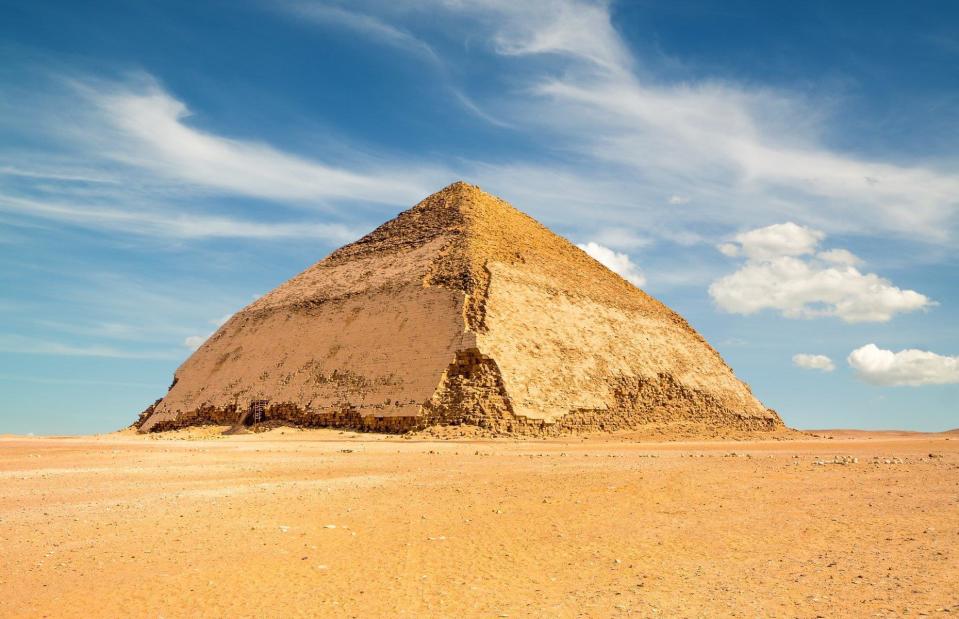
Gurgen Bakhshetyan/Shutterstock
Few cultures have left behind as many fascinating treasures and monuments as Ancient Egypt: the Great Pyramid and Sphinx, the Valley of the Kings, the gold mask of Tutankhamun and the Rosetta Stone are all world renowned, attracting millions of curious visitors per year. Treasures of Ancient Egypt by Nigel Fletcher-Jones, explores the spectacular riches of this ancient world through a selection of stunning photographs. We take a peek inside it here, so you can feast your eyes on Egypt's familiar sights and lesser-known relics, and discover the fascinating stories behind them.
Pyramids at Giza
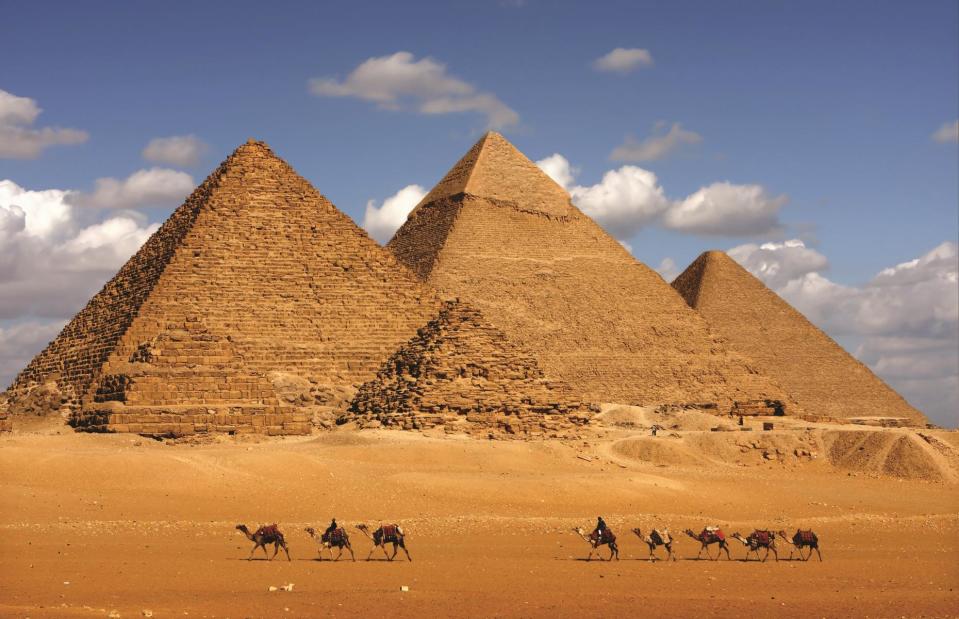
Sculpies/Shutterstock
Imagine ancient Egypt and the sprawling Giza pyramid complex is likely the first image that springs to mind. Already ancient by the time Classical Greece flourished, the pyramids at Giza represent the most iconic ancient Egyptian structures to have survived. The largest – the Great Pyramid – was built for King Khufu, who ruled between 2589 and 2566 BC and was one of ancient Egypt's most formative pharaohs. It took 20 years and some 2.3 million stone blocks to complete this mammoth monument.
The Pyramid of Khaefre, Giza Plateau
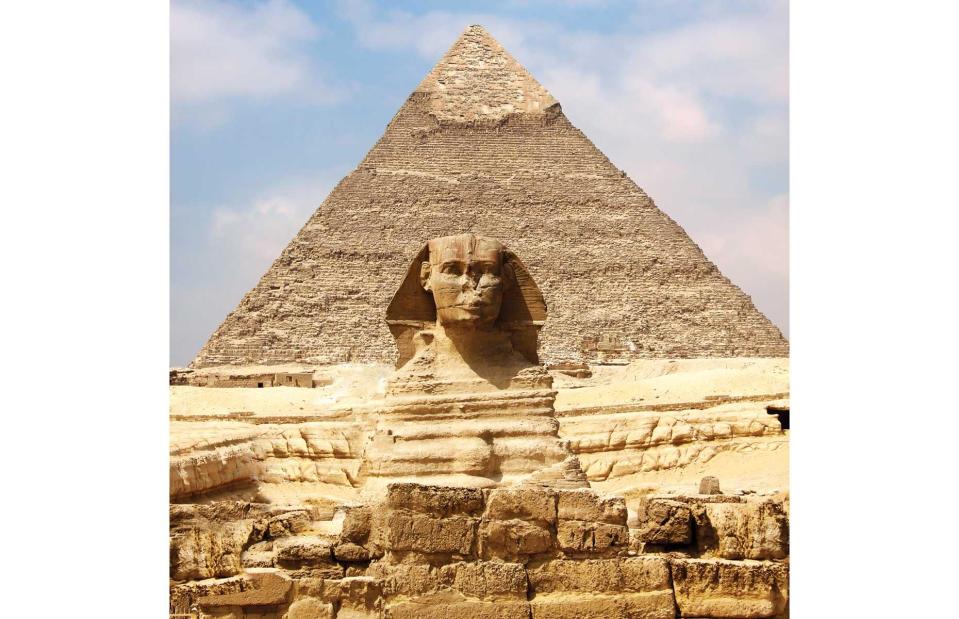
S-F/Shutterstock
The second largest of the pyramids on the Giza plateau was built for King Khaefre (2558–2532 BC), son of King Khufu, the visionary behind the Great Pyramid. This impressive structure gives a clear idea of how an ancient Egyptian pyramid was built. The bulk of the structure was composed of locally quarried limestone and then finished with fine, white, polished Tura limestone from quarries across the Nile as seen here at the top of the pyramid.
‘Colossi of Memnon’, Memorial Temple of Amenhotep III, Luxor
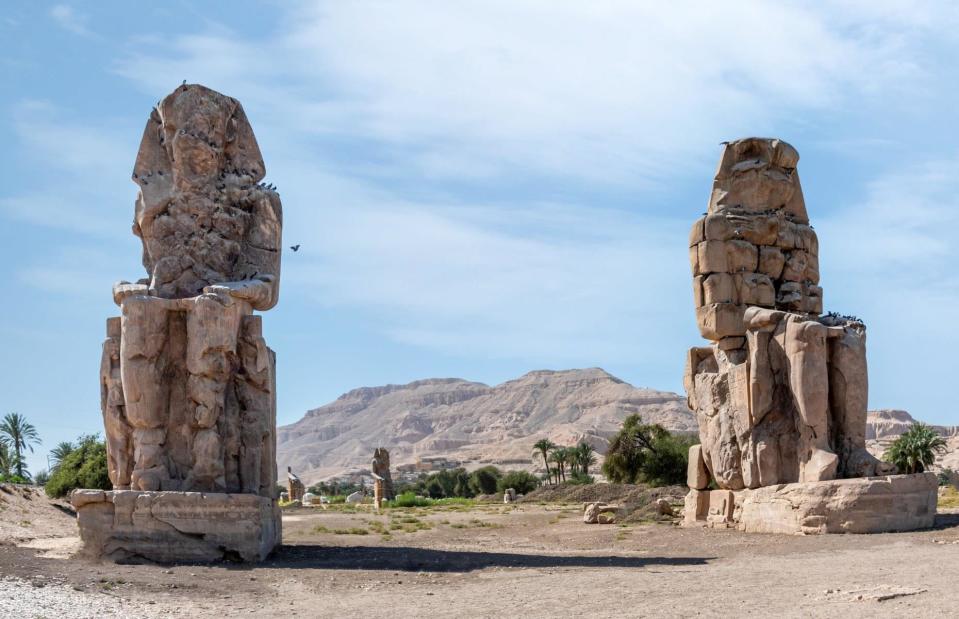
Dmitri Kalvan/Shutterstock
Around 400 miles (643km) south is Luxor, a city also rich with the vestiges of Ancient Egypt. This region was greatly influenced by King Amenhotep III (1390–1352 BC), a ruler of the New Kingdom tipped as "the most prolific builder Egypt had yet seen". Described for centuries as statues of the fictional Greek hero Memnon, these 59-feet (18m) high effigies of Amenhotep III originally stood in front of the king's great memorial temple that was destroyed by an earthquake soon after it was completed.
Great Hypostyle Hall, Karnak Temple
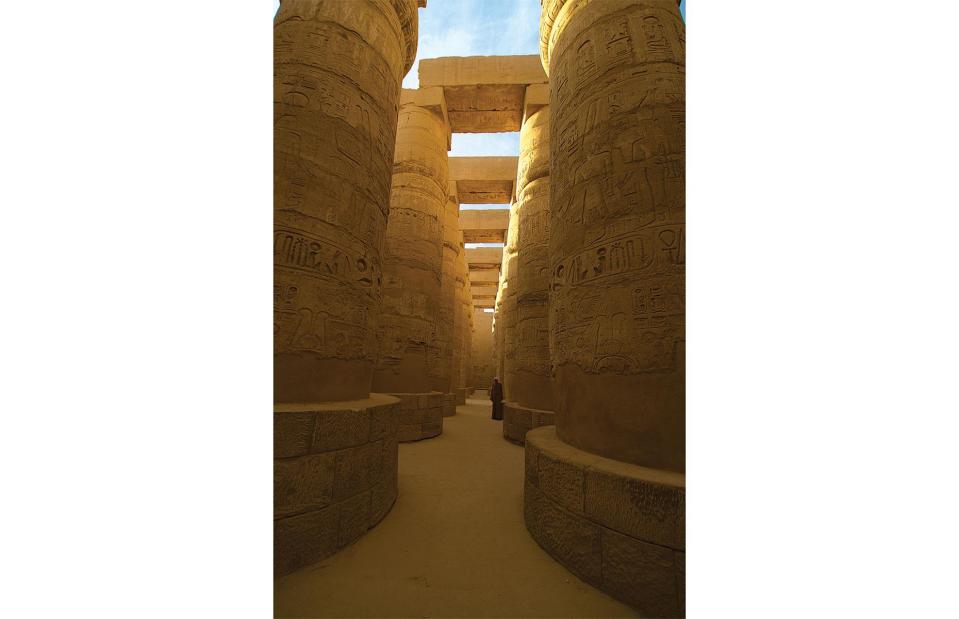
Nigel Fletcher-Jones
Nearby is the Karnak Temple Complex, an archaeological site rich in treasures and home to one of the great masterpieces of ancient Egyptian architecture. The Great Hypostyle Hall, a jaw-dropping site filled with intricately carved columns, was the vision of Seti I (1294–1279 BC), another New Kingdom pharaoh. The pillared hall is testament to Seti I’s interest in art, since he was "a rare combination of military leader and connoisseur of the arts". The hall – standing before the innermost shine complex of Amun-Re, god of the sun – was intended to represent the primeval swamp land that emerged at the creation.
Ceiling, Great Hypostyle Hall, Temple of Dendera
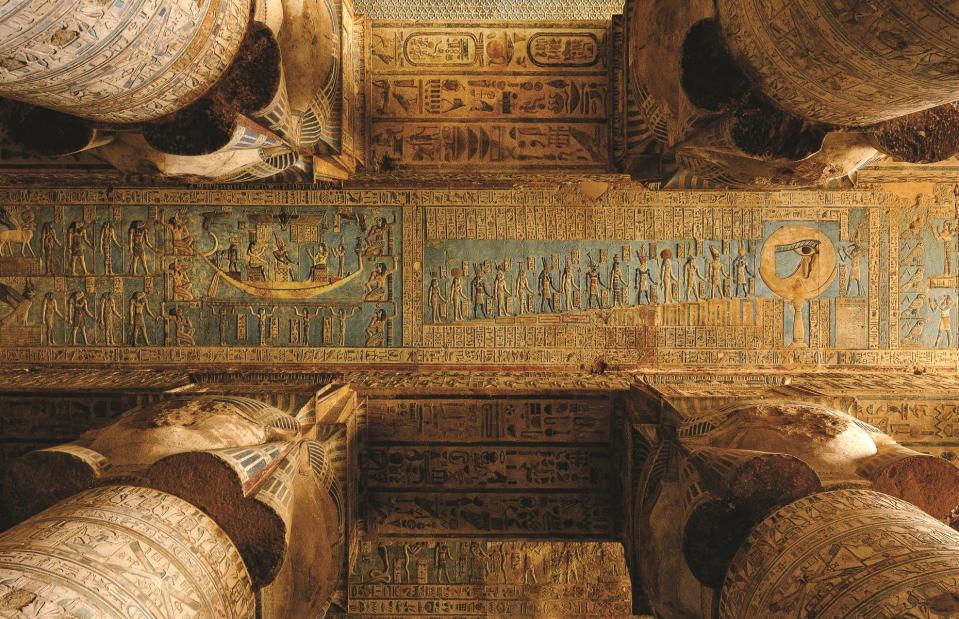
Nick Brundle/Shutterstock
Another impressive hall exists at the Temple of Dendera, some 40 miles (64km) north of Karnak. Dating to the reign of Emperor Tiberius (AD 14–37), the beautiful outer hall was constructed with 24 columns, each of which had a capital with the face of the goddess Hathor on each of the four sides. The ceiling maps out a symbolic chart of the heavens including the familiar signs of the zodiac, introduced to Egypt by the Romans.
Cave of the Swimmers, Wadi Sura
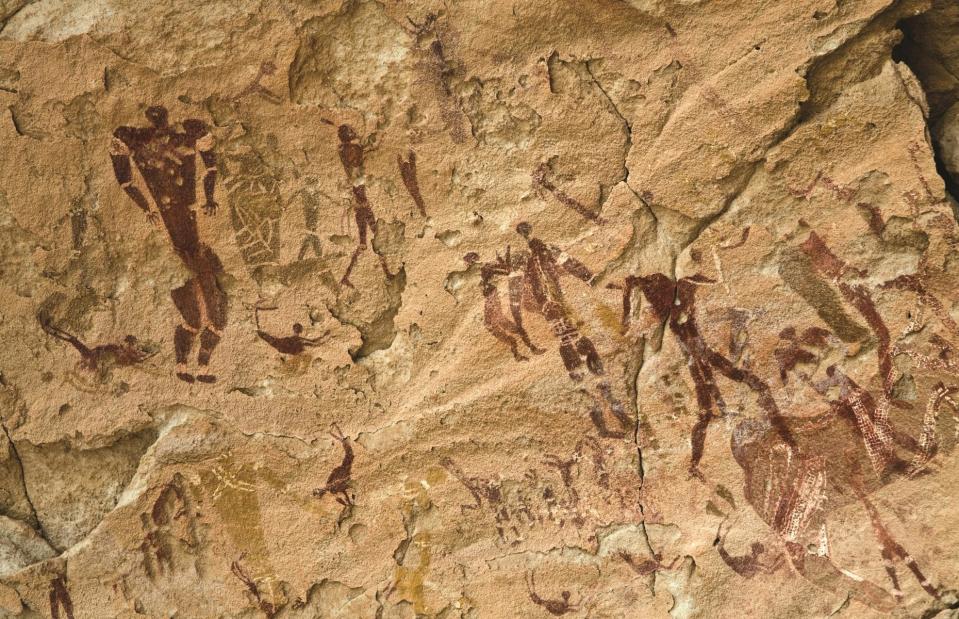
Mike P Shepherd/Alamy
Though a far cry from the intricate temples and pyramids of later civilizations, Egypt's rock art offers a glimpse into the innovation and creativity of even the earliest settlers here. The area covered by the Sahara today was formerly made up of savanna grassland and lakes, home to nomadic hunter-gatherer-fishers. Now deep in Egypt’s Western Desert, the Neolithic cave paintings at Wadi Sura show these nomadic peoples occupied in a variety of activities, including, possibly, swimming in the seasonal lakes.
Pectoral of the Goddess Nut, Tomb of Tutankhamun
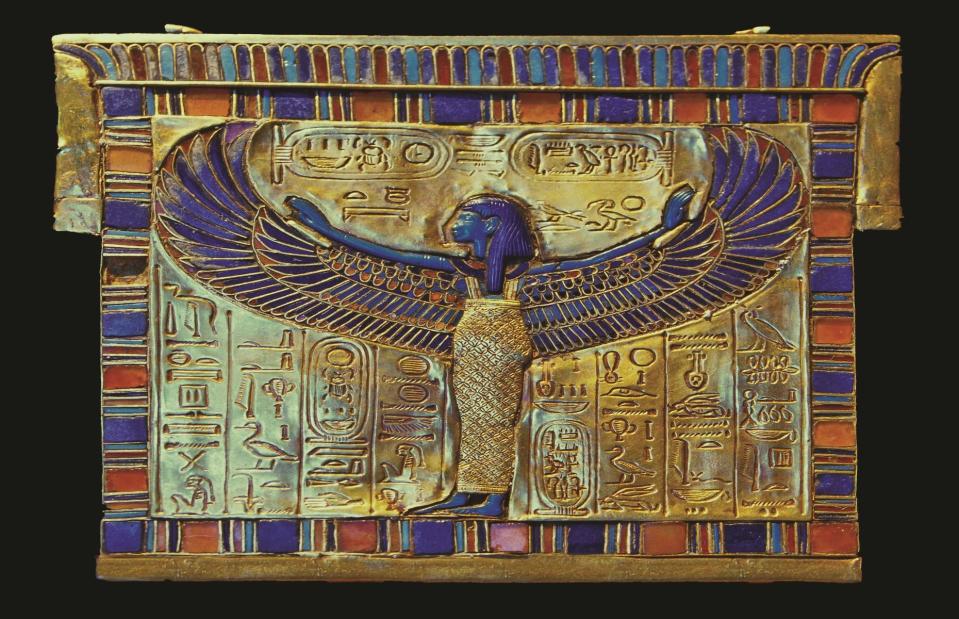
Jose Lucas/Alamy
Outside of the archaeological sites themselves, the world's great museums preserve many more Egyptian treasures for posterity. One glittering example is this breastplate (or fitting for a belt, perhaps), which was found in the tomb of one of Egypt's most famous pharaohs (Tutankhamun, 1336–1327 BC). The wings of the sky goddess, Nut, are outstretched and the hieroglyphic text states that the goddess "opens her arms over her son, the king, in protection of his body". It is thought that this object may have originally been made for Tutankhamun’s father, Akhenaten, and it is now held by the Grand Egyptian Museum, Cairo, which is currently under development.
Funerary Mask of Psusennes I, Tomb of Psusennes I, Tanis
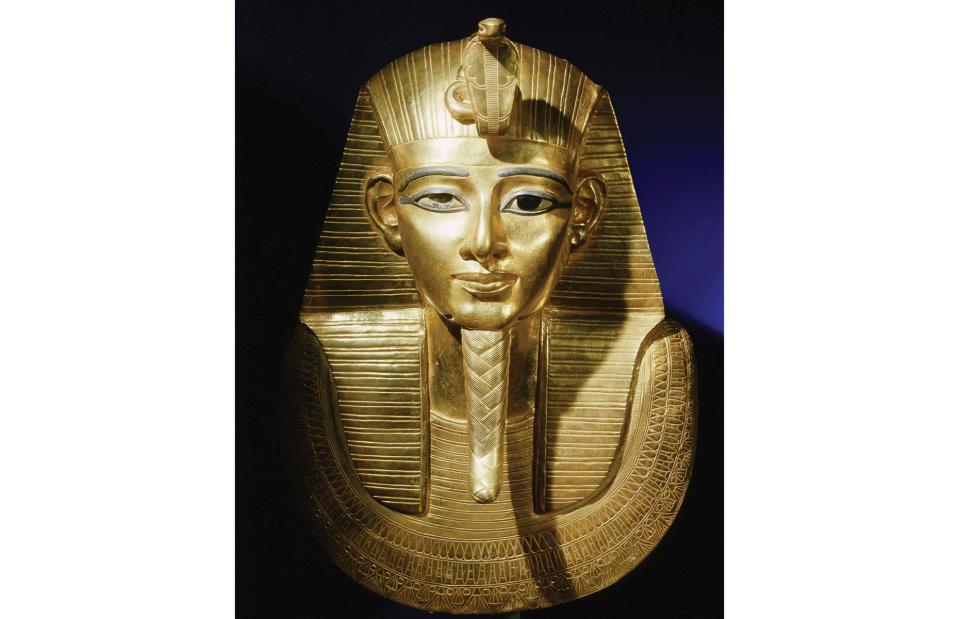
Alamy/Heritage Images Partnership/Werner Forman
Another fascinating museum relic, this funerary mask is among the treasures from Tanis, a city in northeastern Egypt. Today held in the Egyptian Museum, Cairo, it's made from sheet gold (‘the flesh of the gods’), lapis lazuli and glass paste. The false beard curves upwards slightly to indicate the divine status of the dead king Psusennes (1039–991 BC), who was known for his hand in building Tanis' Great Temple and for helping to develop the city. A glass-paste-filled groove runs along the side of the face, imitating the string with which the beard was tied on.
House Shrine of Akhenaten, Nefertiti and Daughters, Amarna
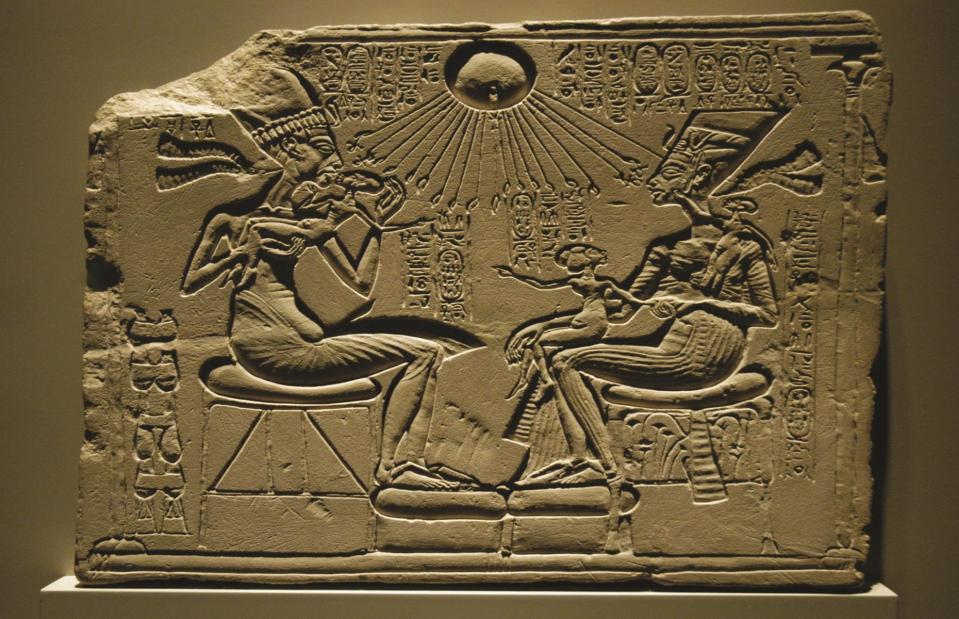
Prisma Archivo/Alamy
This fascinating relic has found its way from Egypt to Germany and forms part of the collection of Berlin's Egyptian Museum. The image was probably part of an altar to the divine family – ancient Egyptian pharaoh Akhenaten, his famed wife Queen Nefertiti and their daughters – and might have represented how they appeared within a particular palace window to the people of Akhetaten. Sunrays ending in ankh signs (hieroglyphic symbols meaning 'life') emanate from the Aten (the image of the sun) and onto the royals.
Bent Pyramid, Dahshur
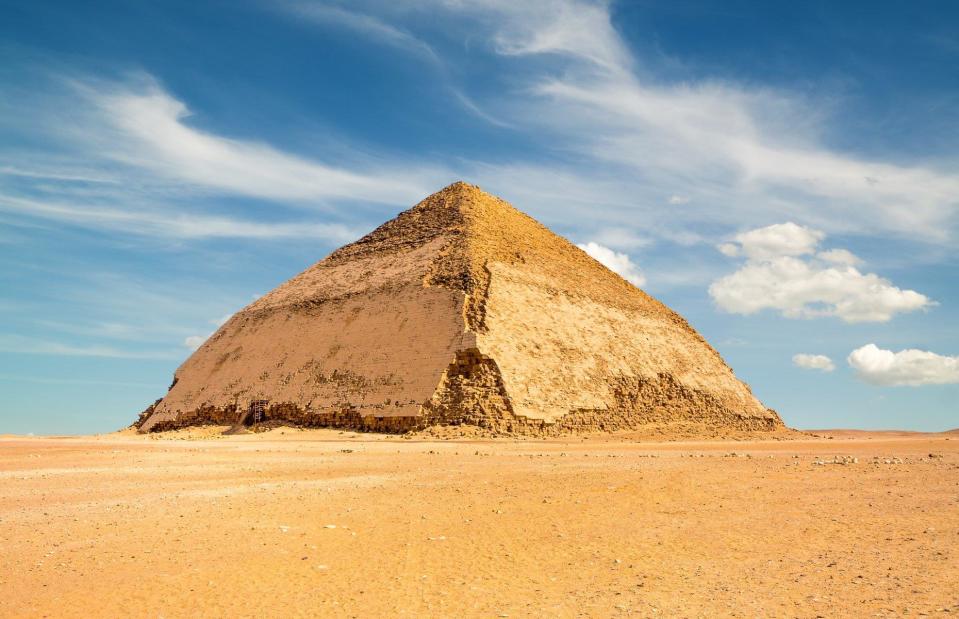
Gurgen Bakhshetyan/Shutterstock
Strike just under 20 miles (32km) south of Cairo and you'll hit Dahshur, another important archaeological site and home of the Bent Pyramid. This striking structure is one of the pyramids built by King Seneferu (2613–2589 BC), who was father of Khufu, grandfather of Khaefre, and the very first king of Egypt's 4th Dynasty. The lower part of the pyramid rises at an angle of 54 degrees to 154 feet (47m) and then changes to a 43-degree angle, most likely because of construction problems.
Great Sphinx, Giza Plateau
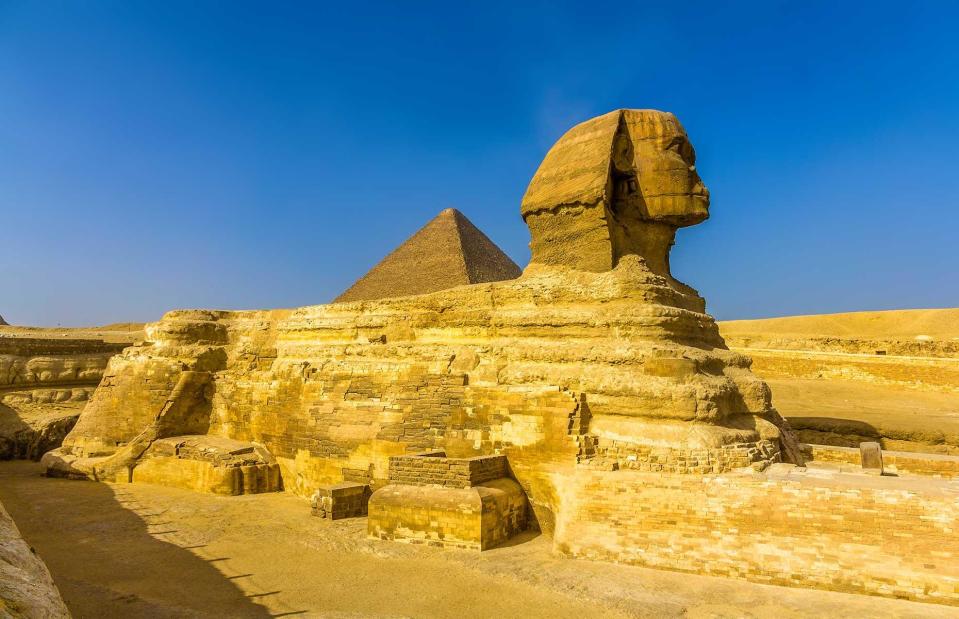
Leonid Andronov/Shutterstock
The Great Sphinx was also built for Khaefre. Carved from a rock outcrop, the landmark is generally accepted to be a representation of the king with a lion's body. It measures 240 feet (73m) from paw to tail, rises 65 feet (20m) high and is about 62 feet (19m) wide across the haunches. The lower part of the sphinx is composed of softer limestone than the head – this led to a greater degree of erosion, which was repaired first in antiquity.
Statue of Khaefre, Lower Temple, Giza Plateau
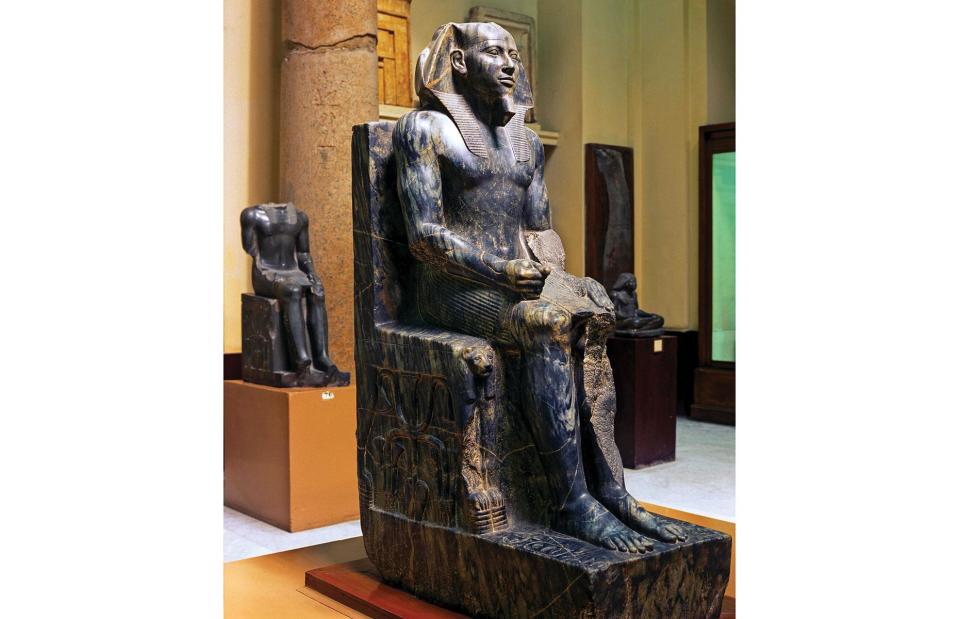
Jose Lucas/Alamy
The Great Sphinx is joined by the Sphinx Temple and the Valley Temple, which once contained multiple fine statues of King Khaefre – one of these statues is pictured here. It's regarded as a supreme example of artistic skill in representing the king as both all-powerful and divine: the high degree of polishing across all the surfaces would have reflected the available light, and the green veins within the diorite stone would have enhanced the unworldly effect. It can now be seen in the Egyptian Museum in Cairo.
Find out more
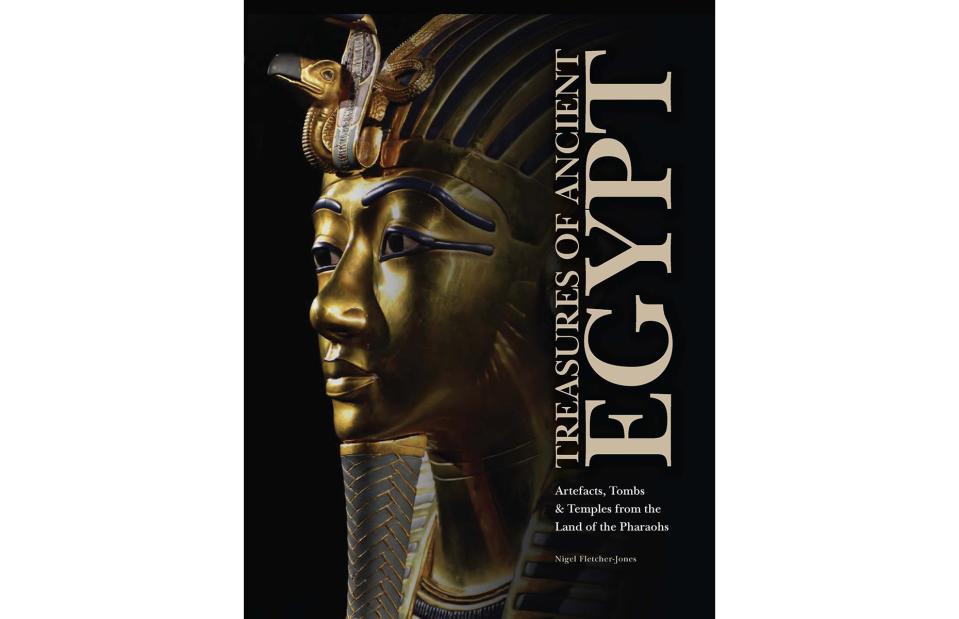
Courtesy of Amber Books
All images are taken with permission from the book Treasures of Ancient Egypt by Nigel Fletcher-Jones, published by Amber Books Ltd and available via Amazon.
Now learn the newly discovered secrets of the world's ancient wonders


